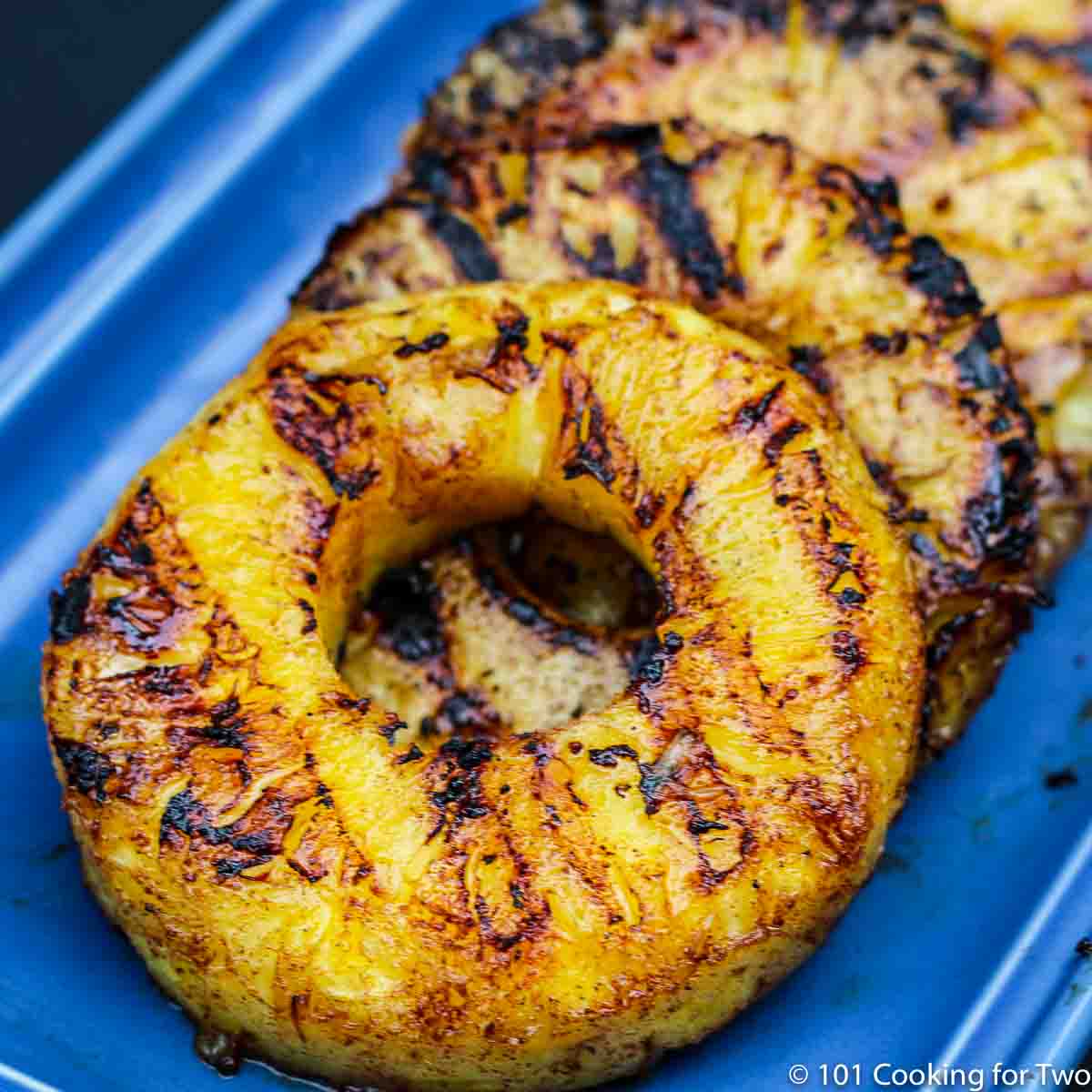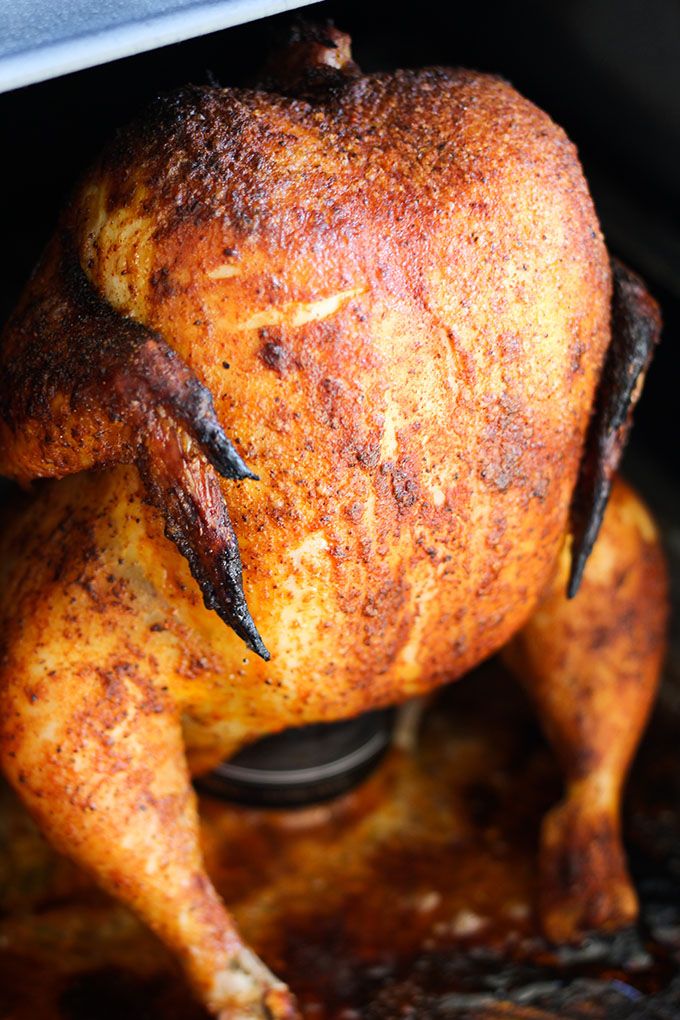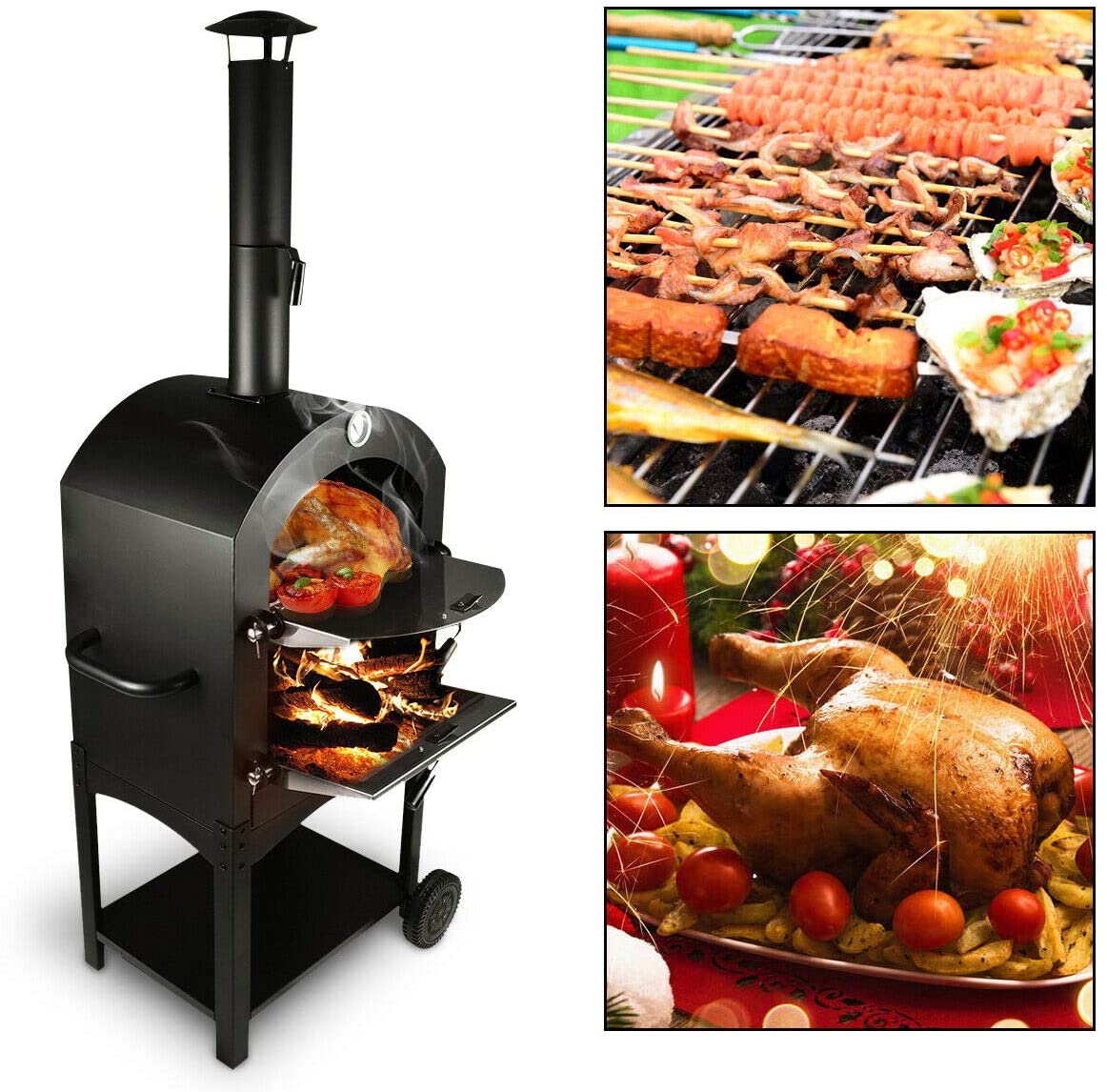
You can heat your food by cooking it over coals. The heat produced by a charcoal grill with large open vents will be higher. If your flames are high, you have enough oxygen flowing through. Low flames indicate that there isn't enough oxygen. If you are cooking your food too quickly, close the vents. The higher the flames, higher the heat. If the flames are low, you are using too little charcoal.
Ventilation
You may have encountered an intake vent when cooking on a charcoal barbecue. This device supplies oxygen to the combustibles. This is the source of "fuel" for the grill. The grill's "fuel" is the amount of oxygen that can be emitted from the vent. You can control the oxygen rate by controlling the temperature.
Temperature control is done by the charcoal grill's intake valve. Find two arrow marks close to the vent. If the arrows point to half-open, the vent is open. The top lid contains both the oxygen and exhaust dampers. The top lid can be opened and closed to control the heat and intensity. Also, the larger the vent, the hotter the fire will get.
As much as possible, the charcoal grill's vents should be open. Vents left open can lead to charcoal that is hotter and more quickly burning. Shutting the vents can lower the internal temperature and reduce smoke. The bottom vent should always be opened and the top should be closed. Open the bottom vent only slightly if you notice too much smoke while cooking. If it doesn’t, you can always close the vent halfway or fully.
The outtake ventilation is another component you need to think about. The outtake valve pulls oxygen from your air. Charcoal/wood fires produce gases, and if not vented properly, they will smother the fire. Adjusting the intake vent is a good idea to ensure that the temperature is right before you cook. If you're a beginner, start with the intake vent and work your way up from there.
Exhaust vent
An exhaust vent is located on a charcoal barbecue and controls how much air can enter the cooking area. A partially or fully open vent will allow more oxygen to enter the cooking area. This will lead to a bigger fire. If the vent is closed, however, less oxygen will enter the cooking area, which will starve the fire of oxygen and lead to a smaller flame. When controlling exhaust vents, there are many things to consider.
The exhaust vent of a charcoal grill works to balance the oxygen levels in the bottom and top chambers. This is crucial for cooking the perfect burger. Charcoal grill exhaust vents, sometimes called dampers, are not chimneys to let out heat, but rather a way to control the temperature directly. Proper use of the vent is a way to improve the taste of your food while keeping it juicy and tender.
The most important component of a charcoal grill is its exhaust vent. You should heat the charcoal directly on the coals to extract the maximum heat. You can also use the 2-zone technique to regulate temperature. You can move food by cooking in sections using the two-zone method. If you don't have time to move the food from one zone to another, the top vent can be opened to help regulate the flame.
An intake damper is the second part of an exhaust vent for charcoal grills. This vent is located at the bottom of your grill. Wood and charcoal require oxygen to burn. Opening the vent reduces that amount. The intake damper is typically located on the bottom of the grill. Open the vent and the fire may reach higher temperatures than the others. It heats the fire and makes it more efficient, allowing you to cook more food while not having to open the lid.
Reduce intake

An intake vent allows air to enter charcoal grills. When heat rises, oxygen is drawn into the grill. An properly functioning charcoal grill intake diaphragm opens the grill's airways. Open the intake damper to allow more oxygen into your grill. A closed vent will restrict oxygen. Too much air can cause coals to get too hot and burn food without cooking. A closed damper will kill the coals.
Vents and dampers, also called intake and exit vents, are basically the same thing. An intake damper can found at the bottom of a charcoal-grill, while an exhale vent is found at the top. The exhaust and intake vents on a charcoal grill are designed to draw oxygen into the fire. To ensure the proper temperature of your food, keep them open. The charcoal grill will produce more heat than it can handle if it's hot.
The charcoal grill intake damper can be adjusted to enhance or restrict the temperature. The more open the vent, the more oxygen can enter, and the less air, the cooler the grill will be. There are two dampers on charcoal grills. One is located on the lid, and the other in the bottom. The damper controls the temperature of the charcoal barbecue, so it is essential to keep it open in order to get the best flavor. When adjusting the intake damper, keep in mind that the charcoal grill intake damper will take up to 10-20 minutes to settle.
A charcoal grill intake damper helps keep the fire from spreading out of control. Without a lid, the charcoal is in a volatile state and will burn until it is reduced to ashes. A charcoal grill can be set on fire by sealing the vents. The vents prevent drafts and keep the heat from rising. This is also known by the "fire triangle", which is a method of controlling the temperature.
While it is still warm, wash the grill grates.
It is simpler to clean grates of your grill when they are still warm than to use harmful chemicals or heavy metal tools. To clean your grill grates, soak them in a mixture of two cups vinegar and one cup baking soda. Allow the mixture to sit for about an hour and then scrub the grates thoroughly with a steel wool or a scouring pad. This method is safer, more efficient than other chemical solutions, and better.
After each cooking session, clean the grates of your grill. You can remove any food from the grill grates that has become brown by using a stainless-steel brush. If possible, you can also use a separate scraper or the built-in scraper to remove burnt-on food. If bristles get loose, you can take them out. Once you have scrubbed the grates thoroughly, rinse them and then dry them.
Cast-iron grates can be cleaned with soap and warm water. Grates that have a lot of grease buildup could result in them losing their nonstick properties. It is important to clean them thoroughly if you want to keep them looking new. You should wash porcelain grill grates with soapy water. To prevent rusting, you may use vegetable oil in place of a cleaning solution.
Aluminum foil can also be used for cleaning the grill grates. Use tongs to remove the aluminum foil from the grill grates. You can remove food from the grill grates by using a brush. Before wiping down the grill, let it cool off. This will make sure that your grill is clean. You can cook on a charcoal grill for just a few minutes.
Checking the vents

Vents on a charcoal grill regulate both the amount of oxygen reaching the charcoal and the interior temperature. You will learn how to use the vents correctly and master charcoal grilling. You will be able more effectively control the temperature of your food and the flavor. To avoid a fire, you should close all the vents and let the grill cool off before storing.
It's common for a charcoal grill's lid to rust shut if heavy rain has recently fallen on the area. Rust can make it difficult for the grill's vent to open, allowing oxygen to enter. This can lead to semi-cooked meals or semi-burnt carbon. A charcoal grill's vents are essential to the grill's proper functioning. To prevent problems from arising and to make cooking more enjoyable, you should inspect them frequently.
A vent's role is to regulate the amount of oxygen that enters the grill and how much oxygen escapes. The bottom vent is important in winter cooking as less oxygen means that food cooks quicker. The purpose of a vent is to regulate temperature. If the vent is not functioning, an aluminum pan with similar effects can be used. You can still cook more food with it, even though the temperature won't change as much as water.
The top vent is also known by the exhaust damper. For charcoal grilling, it is essential to properly use the damper. The damper should be kept closed tightly to avoid excessive heat and smoke. Proper settings are important for achieving the desired flavor of smoke. You should adjust the vent damper to suit the food you are cooking. You must also consider the charcoal grill you use.
FAQ
How can I be motivated to cook?
Sharing food with friends and family is a great way to have fun cooking. Cooking for your own family is much easier than making meals for others. Make something new to get motivated to cook. This will help you learn about new techniques and ingredients. You can also use recipes from other cultures to increase your culinary knowledge.
Is there a better career path for someone who dreams of becoming a chef? How do I get started as a chef?
You should start as an apprentice if you are interested in becoming chef. Apprenticeships give you the opportunity to work for many years without having to pay tuition fees. After your apprenticeship, you may apply for a role as a sous chef. Sous chefs supervise cooks and assist them with tasks like making salads and desserts. They are also responsible for the overall operation of the restaurant.
How do I get hired as chef?
First, you need to earn a culinary arts diploma in order to get a job working as a chef. Next, join a professional organisation such as ACF. The ACF offers certification exams and networking opportunities.
How do I learn how to cook like an expert?
Cooking can be a great way for you to grow as a person. You can increase your self-confidence by learning how to cook healthy foods for yourself and others. Learn how to cook healthy food at home. It is important to discover what type of recipes you enjoy. Read books about various foods such as Chinese, Mexican, and Italian. Finally, you can practice cooking different dishes until your skills are perfect.
Is there a better way to learn to make delicious meals?
Cooking is something that everyone should be able to do. You will miss out on great meals if you don't learn how to cook. The first thing you need to do when learning to cook is to find a recipe that you like and follow it closely. Next, practice making small changes until you are comfortable cooking the dish. Next, you can cook for others. This will allow you to improve your cooking skills and test your abilities.
How Much Does it Cost to Learn Culinary Arts Skills?
There are many factors that influence the cost of learning culinary arts. For example, a four-year degree typically costs around $40,000. A two-year associate's program may be less expensive at $5,000. Tuition costs vary depending on which program you choose. Public institutions are more expensive than private institutions.
How can I learn more about cooking?
All over the country, cooking classes are offered. Many schools offer courses in baking, pastry, and wine tasting. You can take a class at your local vocational school or community college if you are interested in learning more about cooking.
Statistics
- under 10 Kids have been taught that there is special food just for them, and Fiese says that 10 percent of kids will throw a tantrum if they don't get the food they want. (washingtonpost.com)
- You'll be amazed that over 90% of CIA students receive scholarships and grants to finish their culinary studies. (ischoolconnect.com)
- According to the BLS, chefs earn $58,740 a year. (learnhowtobecome.org)
External Links
How To
How to make a perfect eggroll
Omelets have always been a favourite food to eat for breakfast. How can you make them perfectly? I've tried many recipes and different methods but none have worked. I have some tips and tricks to help you make delicious, fluffy omelets every single morning.
First, eggs can be very temperamental ingredients for making omelets. You must get them fresh, organically, and keep them cold until you cook. If they are not kept cold enough, the whites won’t form properly. The yolks will also break down too quickly and become runny. This will make your omelets appear strangely colored. If you want to make omelets right away, it's best not to use eggs that are too cold.
Another tip is to separate each egg before adding them to the saucepan. It is important not to allow any white to mix with the yolk as this could lead to the omelet becoming curdled.
If you add the egg directly onto the stovetop, you might end up burning the bottom part of the egg, which would ruin the texture of your omelet. Instead, microwave the egg for 10 seconds before adding it to the pan. The microwave heat is sufficient to cook the egg without overcooking.
Let's now talk about mixing eggs. When mixing eggs, it is important to thoroughly beat them. To do this, take the bowl from the mixer and flip it upside-down. Next, shake the bowl vigorously. This way, the air inside the bowl gets whipped around and mixes the egg thoroughly.
The fun part begins - you need to pour the milk into your mixture. The first step is to pour half of the milk in the beaten eggs. Next, fold the eggs into the remaining milk. Don't worry if there are still streaks of egg visible; these streaks will disappear once you flip the omelet.
After you have folded the eggs, heat the oil in a pan over medium heat. Once the oil has started to sizzle, turn the heat down to low. Add 1/4 cup butter to the oil and swirl it around to coat all sides of the pan. Next, carefully open the lid and sprinkle salt into your pan. A pinch of salt will help prevent the omelet from sticking to the pan.
Once the omelet has formed completely, cover the pan and let it set for a few minutes. Flip the omelet with a spatula, or flip it upside down. Cook the second side for a minute or so. Remove the omelet from the pan and serve immediately.
This recipe works best when you use whole milk.